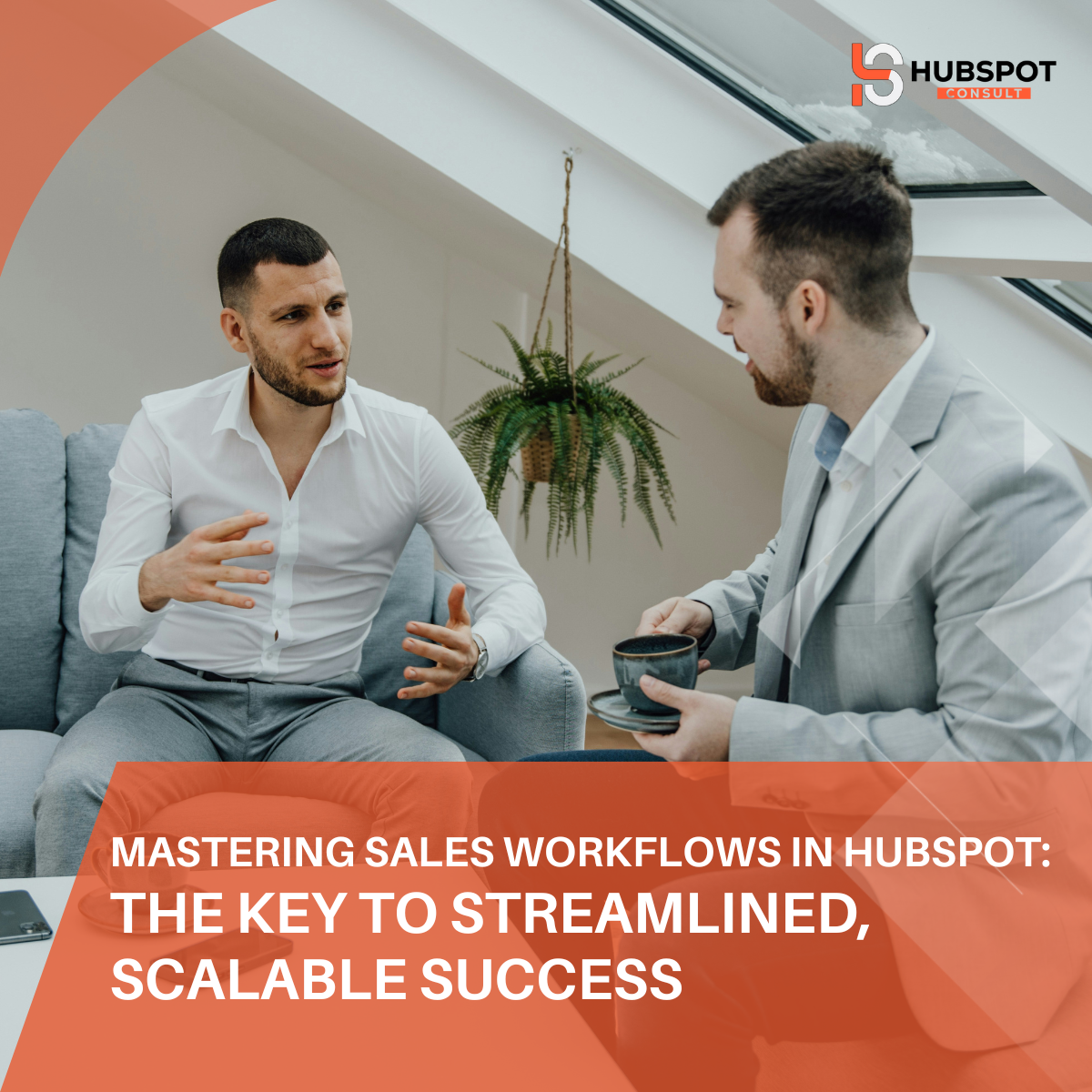In today’s hyper-competitive environment, sales teams need more than intuition—they need structured processes. That’s where a well-designed HubSpot sales workflow comes in.
For growing businesses using HubSpot CRM, the sales workflow is the backbone of consistent revenue generation. But not all workflows are created equal. Without thoughtful planning and ongoing refinement, sales teams risk losing leads, mismanaging follow-ups, and wasting valuable selling time.
At HubSpot Consult, we specialize in designing high-impact sales workflows tailored to your sales motion—empowering your team to move faster, close smarter, and build scalable revenue.
What Is a Sales Workflow?
A sales workflow in HubSpot refers to the sequence of steps, both automated and manual, that guide your team from first touch to closed deal. It helps enforce consistency across your pipeline while removing manual burdens through automation.
From automating lead assignments to scheduling follow-ups and advancing deals through the pipeline, workflows ensure nothing falls through the cracks.
HubSpot’s workflow builder enables:
- Automated emails and task creation
- Lead rotation and qualification routing
- Lifecycle stage progression
- Deal stage automation
- Internal alerts and notifications
- Custom property updates
Whether you’re a startup or an enterprise, a clear workflow can mean the difference between scattered activity and scalable growth.
Why Do Sales Workflows Matter?
Sales reps are typically bogged down with CRM updates, manual outreach, and administrative tasks. According to recent insights from HubSpot, the average rep spends just over 2 hours a day actively selling.
A good sales workflow addresses this by:
- Reducing repetitive manual tasks
- Triggering timely, personalised communications
- Keeping deals moving through the funnel
- Aligning team actions with pipeline stages
- Providing insights for better forecasting
It also allows new reps to onboard faster by following a proven, automated system rather than learning by trial and error.
Key Components of a High-Performing Sales Workflow
At HubSpot Consult, we use a structured methodology when building workflows. Here’s what a great one includes:
1. Deal Stage Alignment
Every workflow starts with a well-defined pipeline. Whether you’re using default HubSpot deal stages or customized ones, the workflow should align with each stage’s purpose (e.g., Discovery Call, Proposal Sent, Negotiation, Closed Won).
2. Lead Qualification and Segmentation
Use automation rules and lead scoring to determine who gets routed where. HubSpot’s lead scoring feature can qualify prospects based on behavior (email opens, page visits) and attributes (company size, industry).
3. Automated Task Management
Create follow-up tasks automatically when a deal hits certain milestones. For example, assign a call task 24 hours after a proposal is sent if there’s no reply.
4. Smart Email Sequences
Automate nurture emails to keep leads engaged. Sequences can include check-ins, value-based content, and calendar invites.
5. Internal Notifications
Alert sales managers when high-value deals enter a critical stage or when reps are falling behind in follow-up.
6. Exit Criteria
Ensure workflows stop when a deal is lost, won, or disqualified, preventing irrelevant communication.
Sales Workflow in Action: A Real Use Case
Let’s say a B2B software company uses HubSpot and wants to speed up its mid-funnel deal movement. Here’s a sample workflow we implemented:
- Trigger: Deal stage changes to “Qualified to Buy”
- Action: Assign a rep based on industry
- Email: Send an intro message with a meeting link
- Task: Follow-up call 2 days later
- Branch: If the meeting is booked, advance to “Presentation Scheduled”
- Alert: Notify the sales manager if no activity in 5 days
- Exit: Workflow stops if the deal is marked “Closed”
This removes ambiguity and empowers reps with a clear, automated plan.
HubSpot’s Latest Sales Workflow Features (2024–2025)
Recent updates make workflows more intelligent:
- Conditional Playbook Fields: Guide reps based on deal properties for smarter data capture
- Time-Since/Time-Until Fields: Automate outreach based on engagement gaps or approaching deadlines
- Sales Workspace with Guided Actions: Offers centralised deal, task, and follow-up management
- AI-Powered Meeting Summaries & Follow-ups: Reduce admin load and keep prospects engaged
Common Pitfalls in Sales Workflow Design
Avoid these mistakes:
- Over-reliance on automation: Sales is still human. Let reps add personal touches.
- Workflow sprawl: Too many overlapping workflows can lead to chaos.
- Poor exit conditions: Leads stuck in a loop cause a poor customer experience.
- Ignoring testing and iteration: Workflow performance should be reviewed monthly.
Let HubSpot Consult Help You Build Workflows That Sell
At HubSpot Consult, we don’t just build workflows—we build revenue engines. We tailor each flow to your product, sales cycle, and team capacity. Our certified HubSpot consultants perform workflow audits, recommend improvements, and build new sequences from scratch.
We also train your team on how to manage and iterate them over time.
Conclusion
A high-performing sales workflow isn’t just automation—it’s structure, accountability, and acceleration. With HubSpot’s robust tools and expert guidance from HubSpot Consult, you can eliminate bottlenecks and turn your sales process into a growth engine.

